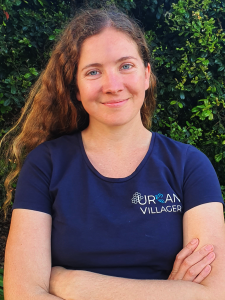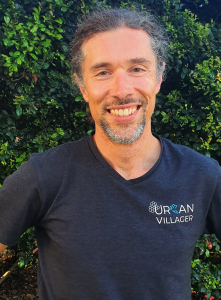Our Story
Urban Villager was born in 2020.
After working in sustainable real estate development for many years, and watching as the housing affordability crisis worsened, we wanted to do more to help with affordability.
Sustainable housing is crucial. However, with the current system, it’s out of reach for most people, and especially those renting.
And with more and more people moving into cities, more people renting, the continuing eradication of green spaces, the erosion of community, and the increased cost of living, we felt like we could, and should, be doing more. There has to be a better, viable solution.
So, we took a bold step
If we started with people-first design, what would be different?
If we built housing where the most important thing was the happiness, health and wellbeing of the people living there, what would it look like?
Secondly, how would we make that a sustainable, and even regenerative, building, not just during construction, but on an ongoing basis?
And thirdly, how could we make that financially viable, so that the solution could be scaled?


Those questions took us around the world
We visited the happiest country in the world and looked at why they are so happy. We went to the USA and looked at their multi-family housing models. We looked at eco-villages around the world, we went to the Global Wellness Summit and looked at wellness architecture, and we’ve been to (and spoken at) the Asia Pacific Impact Investment Summit.
Here’s what we found
However, the single-bottom-line real estate development system in Australia doesn’t value community at all. The way that we have been building housing is making us sick, stressed, isolated and unhappy. The housing in which we live, and the community in which we participate, is responsible for 80-90% of our health outcomes, and those outcomes are getting worse.
The good news is that wellness lifestyle real estate (or, what we like to call ‘Urban Villages’) can be planned, designed and built to optimise our wholistic health and wellbeing.
Fixing the built environment can help to combat the global health epidemic and rising costs. There are tangible benefits to wellness-focused built environments that trigger an upward spiral of both positivity and possibility.
And that’s what we’re doing
More space doesn’t make us happy. Social connections make us happy, and so we design our buildings with spaces designed for interaction, as well as the private sanctuary of home (think green rooftops, with sunny washing lines, native bee hives, and vegie plots).
Feeling empowered to be part of the solution makes us happy, and so we proudly incorporate and display sustainability into our communities. Think solar panels, big rainwater tanks, and natural shade.
Feeling valued, respected and listened to makes us happy, so we’ve become our own landlord for our build-to-rent communities, where we believe that long-term renting should be respected as a valid lifestyle choice. Think great communication with the building owner, the ability to personalise your home, and secure, long-term housing.
A diverse community makes us happy, and so we’ve got diverse housing options in each community. We focus on less private space in favour of more shared spaces. Think beautiful, functional, light-filled studio and one-bedroom apartments, filled with greenery.
We don’t have enough options like this in Australia (where we’ve been taught that ‘normal’ is a three-bedroom house or bigger!), and to create an affordable, sustainable and joyous way of life, we need to create them.
It also makes financial sense: if people are living in a beautiful space, within a great community, that is secure (because it’s not a for-profit investment to be sold when the market is hot), then tenant turnover is going to be lower. When we retain a building, and we’re the ones paying the bills, we create a strong financial case beyond the moral responsibility to build an efficient building that has low running costs. Also, we can show that a wellness community is valued at 10-25% above a comparable, non-well community.
It’s a win/win/win for people, the planet, and the investors.
The key to this is doing things in a new way with patient investment capital with democratised catalytic capital. We don’t believe that real estate development should be trapped in the hands of the elite few.
That’s why we’re partnering with the impact investment community, where the triple bottom line is valued.
Radical problems require radical solutions, and if ‘radical’ means building better buildings, designed for long-term happiness and long-term community, we’re happy to be radical in our approach to real estate.
We hope that you can join us along the journey.
With hope for a brighter future,
Alice & Tibor
Co-Founders.

Alice Joy | CEO and Co-Founder

Tibor Grubits | Design Scientist and Co-Founder
